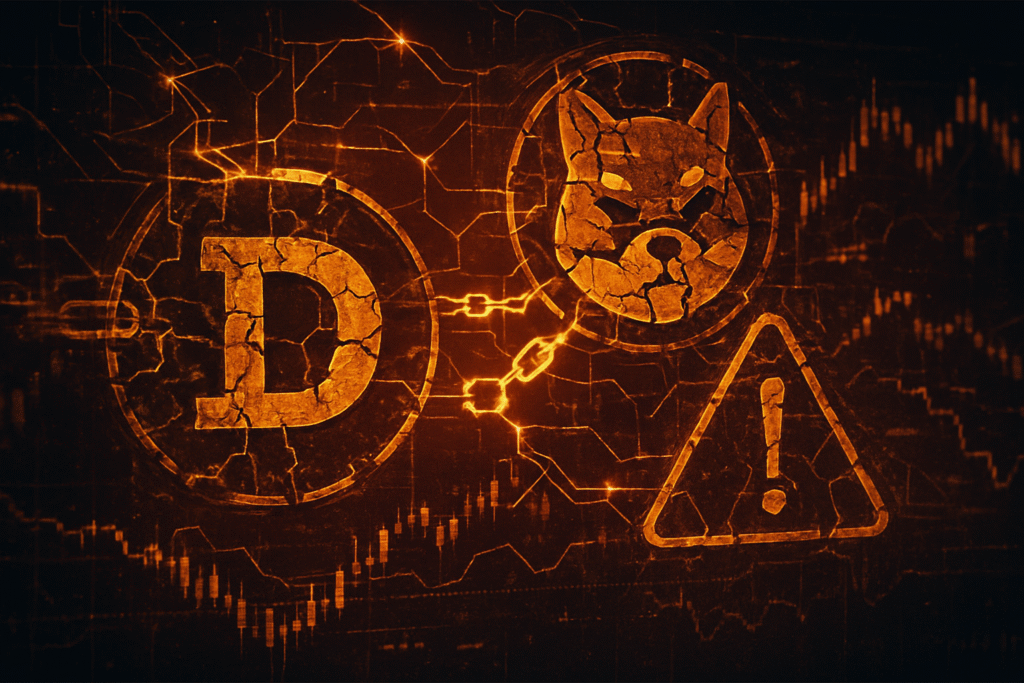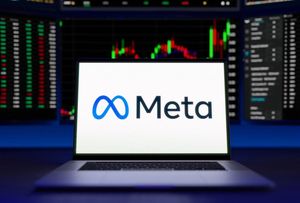
October 20, 2025 – Changpeng Zhao (CZ), the influential founder of Binance, has issued a stark warning regarding the uncontrolled proliferation of memecoin scams, emphasizing the catastrophic dangers they pose to unsuspecting crypto users and the broader market's integrity. The alert, primarily delivered around October 19-20, 2025, came on the heels of several high-profile security breaches, including the compromise of the official BNB Chain X (formerly Twitter) account, which was exploited to spread fraudulent links.
CZ's urgent message has sent ripples through the cryptocurrency community, prompting renewed calls for vigilance and robust security practices. The immediate market response saw increased caution, particularly around speculative assets, as investors grappled with the implications of widespread scam activity. This critical intervention underscores a growing concern within the industry: as the allure of quick profits in the memecoin sector intensifies, so too does the sophistication and frequency of malicious schemes, threatening to erode trust and deter mainstream adoption of legitimate blockchain innovations.
Market Impact and Price Action
The period surrounding CZ's warning has been characterized by significant volatility in the memecoin market, reflecting both the inherent speculative nature of these assets and the direct impact of scam-related incidents. While CZ's statement itself did not trigger a singular, dramatic market crash, it exacerbated an already fragile sentiment, particularly among BNB-based memetokens. In the immediate aftermath of the BNB Chain X account hack and CZ's subsequent cautions, several memetokens witnessed sharp declines, with some losing between 60% and 95% of their value. This precipitous drop was fueled by a combination of liquidity drainage, panic selling, and a clear signal from CZ that legitimate projects would not endorse specific meme tokens.
Trading volumes for many speculative memecoins saw a notable decrease following the warning, as investors grew wary of potential rug pulls and pump-and-dump schemes. The market's technical indicators for many lesser-known memecoins showed a breakdown of key support levels, indicating a lack of buying interest and a strong bearish trend. This contrasts sharply with the earlier "memecoin season" on the BNB Chain, where hype-driven trading often pushed prices to unsustainable highs. The current environment suggests a shift towards risk aversion, with liquidity concentrating in more established or utility-backed assets.
Comparing this to similar past events, the current situation echoes periods of heightened scam activity, such as the numerous rug pulls seen during the DeFi boom of 2020-2021 or the NFT market's speculative excesses. In those instances, a wave of fraudulent projects often led to a broader market correction and increased regulatory scrutiny. The ongoing memecoin saga appears to be following a similar trajectory, where unsustainable gains driven by hype eventually give way to widespread losses for late-stage investors, especially those targeted by sophisticated phishing and wallet-draining scams. The $28 billion loss in market value over a 48-hour period, reportedly triggered by market instability and mass liquidations around this time, highlights the severe financial repercussions of such an uncontrolled environment.
Community and Ecosystem Response
The crypto community has reacted to CZ's warning with a mix of alarm, frustration, and a renewed emphasis on self-custody and due diligence. Social media platforms like X (formerly Twitter) and Reddit have been abuzz with discussions, with many users sharing personal anecdotes of near misses or actual losses from memecoin scams. The sentiment largely reflects a growing fatigue with the prevalence of fraudulent projects that tarnish the industry's reputation. Crypto influencers and thought leaders have amplified CZ's message, urging their followers to exercise extreme caution, verify contract addresses, and avoid connecting their wallets to suspicious links. There's a noticeable trend of influencers advocating for a return to fundamental analysis and focusing on projects with tangible utility rather than purely speculative tokens.
The impact on related DeFi protocols, NFT projects, and Web3 applications has been more nuanced. While the core infrastructure of these sectors remains robust, the proliferation of memecoin scams creates a challenging environment for user acquisition and trust-building. New users, particularly vulnerable to the allure of quick riches, might become disillusioned with the broader crypto space after falling victim to a scam. This phenomenon could indirectly hinder the adoption of legitimate Web3 innovations that aim to solve real-world problems. Furthermore, the constant need for security alerts and scam warnings diverts resources and attention away from development and innovation.
Broader crypto Twitter and Reddit sentiment indicates a strong desire for more proactive measures against scams, both from centralized exchanges and blockchain development teams. There's a push for better educational resources, clearer warnings, and potentially more stringent listing criteria for tokens. While some lament the "wild west" nature of crypto, others see CZ's warning as a necessary catalyst for the community to self-regulate and collectively combat malicious actors, thereby safeguarding the ecosystem's future. The swift response from Binance (NASDAQ: BNCE) to the BNB Chain X hack, including reimbursing some losses and coordinating with X to suspend the account, was generally well-received as a step in the right direction.
What's Next for Crypto
The short-term implications of CZ's warning and the ongoing memecoin scam epidemic are likely to include continued market volatility, particularly in the highly speculative segments. Investors may become more risk-averse, leading to a flight of capital from unvetted projects towards more established cryptocurrencies and projects with clear use cases. This could result in a healthier market correction, weeding out unsustainable ventures. In the long term, the increased scrutiny on memecoin scams is expected to accelerate regulatory discussions globally, potentially leading to more stringent consumer protection laws and clearer guidelines for token launches and social media promotions in the crypto space.
Potential catalysts to watch include further security breaches involving prominent crypto entities, which could intensify panic, or conversely, successful industry-wide initiatives to combat scams, which could restore confidence. Developments in blockchain security, such as advanced AI-driven anomaly detection and improved smart contract auditing tools, will be crucial. Strategic considerations for projects and investors will revolve around prioritizing security, transparency, and genuine utility. Projects will need to invest heavily in robust security measures and clear communication channels to build trust, while investors will need to adopt a more critical and research-intensive approach to their portfolios.
Possible scenarios include a continued "cat and mouse" game between scammers and security experts, with intermittent periods of heightened scam activity. Another scenario involves a more unified industry response, potentially led by major exchanges and blockchain foundations, to create a safer environment through shared blacklists, educational campaigns, and collaborative security protocols. The likelihood of a significant shift towards utility-driven projects and away from pure speculation will depend heavily on the effectiveness of these efforts and the collective maturity of the crypto investor base.
Bottom Line
CZ's recent warning serves as a critical wake-up call for crypto investors and enthusiasts: the allure of quick gains in the memecoin market comes with substantial, often hidden, risks. Key takeaways include the urgent need for heightened personal security measures, such as using strong, unique passwords, enabling two-factor authentication, and exercising extreme caution with any links or unsolicited advice received via social media. Always verify contract addresses independently and be skeptical of projects promising unrealistic returns, especially those promoted through seemingly compromised official channels.
The long-term significance of this period lies in its potential to reshape the crypto landscape, pushing it towards greater maturity and responsibility. While the "wild west" era of unbridled speculation may slowly recede, it paves the way for a more robust ecosystem built on genuine innovation and security. This means a stronger emphasis on decentralized applications (dApps), real-world asset tokenization, and enterprise blockchain solutions. For crypto adoption to truly flourish, the industry must collectively overcome the challenge of scams and demonstrate its capacity for self-governance and user protection.
Important dates and metrics to monitor include the frequency of reported scam incidents, the effectiveness of security measures implemented by exchanges and social media platforms, and any upcoming regulatory announcements related to consumer protection in the digital asset space. Investors should also pay close attention to the development of on-chain analytics tools that can help identify and flag suspicious token activity. Ultimately, the future of crypto adoption hinges on its ability to provide a secure and trustworthy environment for all participants.
This article is for informational purposes only and does not constitute financial or investment advice. Cryptocurrency investments carry significant risk.







